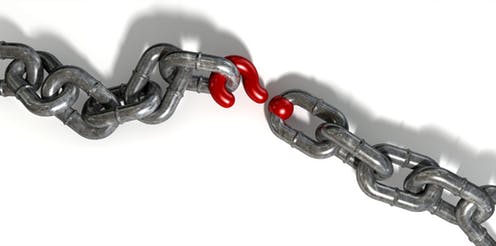| print
link to this post | email a friend The Missing Link04 Apr 2018 By Margaret Kraeling, PT, CCRT
I always enjoy working with our conformation dog owners. They are, of course, very knowledgeable about their breed and about each specific dog and they are experts in assessing gait. In the past year I have been involved in the care of a young boxer who was exhibiting some intermittent lameness on the left front. He had previously been seen by vets who had cleared the shoulder for any boney abnormalities. He also had accessed treatment for his shoulder prior to been seen at the Canine Fitness Centre. The primary findings on my first exam were mild tenderness at C6 and C7 on the left as well as tenderness on the left first rib which was slightly cranially positioned. This is a very stoic young dog and it took some deep palpation to find this! Treatment to these areas gave him some improvement and the lameness became less frequent. As a very rambunctious young boy it was hard to limit his activities but the owners worked hard in particular to avoid the jumping down and vigorous front end activities. Having resolved the neck tenderness I then identified tenderness that extended further down from T3-T5. Treatment here had a good effect and his show ring performance was improving. However there was still “a little something” not quite right! A slightly not perfect topline and some ever so slightly not gaiting smoothly was observed by the owners. My next approach was to do a craniosacral assessment of the entire spine which lead me to an area at T11 – L1 that was tight and pulling to one side. At this point I decided to do some neural tissue “flossing”, canine style. With great owners to assist we put the dog in side lying and positioned the hind limb in a “straight leg raise” (hip flexion and stifle extension.) While I tried to add a little hock flexion and toe extension the owners had him reach for a treat towards his chest (between his front legs). This exercise helps to stretch out, lubricate, and free up the nerves, the spinal cord, and their coverings (the fascia). We repeated this dural mobility exercise 4-6 times with a succession of treats. What a good boy he was! We repeated this exercise on 3-4 occasions over the next several weeks. At the same time he was being conditioned in the UWT at a variety of speeds but particularly focusing on a trot similar to that he would move at in the ring. This dog has done extremely well and has gone on to take several group placings in recent shows.
Addendum: The moral of this story is that sometimes the problem you are having with your dog could be the result of a multitude of factors that require a practitioner that can think differently. Practitioners that have a unique skill set. Practitioners whose background and depth of knowledge in finding and treating complicated and challenging cases is beyond compare. That’s what you’ll get when you invite a physiotherapist to use their skills on your canine companion! And thank you to all of you who have entrusted us with the care of your dog!
|

|

